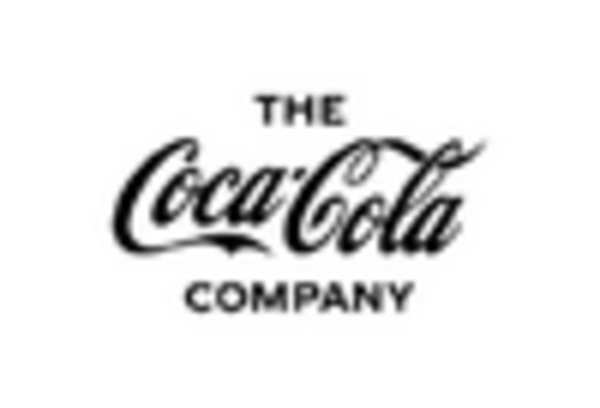Changing Consumer Preferences
The fast moving-consumer-goods market in Canada is significantly influenced by changing consumer preferences, particularly among younger demographics. Millennials and Generation Z are increasingly prioritizing products that align with their values, such as ethical sourcing and transparency. This shift is reflected in the growing demand for organic and locally sourced products, which has seen a rise of approximately 25% in sales over the past few years. As these consumers become a larger segment of the market, companies are compelled to adapt their product lines and marketing strategies to resonate with these values. This trend indicates a potential for innovation and differentiation within the fast moving-consumer-goods market, as brands strive to meet the evolving expectations of their target audience.
Regulatory Changes and Compliance
Regulatory changes are increasingly influencing the fast moving-consumer-goods market in Canada, as the government implements new standards aimed at consumer protection and environmental sustainability. Recent regulations concerning labeling, food safety, and packaging have compelled companies to adapt their practices to ensure compliance. For instance, the introduction of stricter guidelines on food labeling has led to a greater emphasis on transparency and ingredient sourcing. Companies that proactively embrace these regulatory changes may find opportunities to enhance their brand reputation and consumer trust. As the fast moving-consumer-goods market continues to evolve, staying ahead of regulatory developments will be essential for businesses aiming to maintain competitiveness and meet consumer demands.
Urbanization and Population Growth
The fast moving-consumer-goods market in Canada is experiencing notable shifts due to urbanization and population growth. As more individuals migrate to urban areas, the demand for convenience-oriented products increases. Urban consumers often seek quick and accessible options, which drives the sales of ready-to-eat meals and packaged goods. Statistics indicate that urban areas in Canada are projected to house approximately 81% of the population by 2030, leading to a heightened need for efficient supply chains and distribution networks. This urban-centric consumption pattern is likely to influence product offerings and marketing strategies within the fast moving-consumer-goods market, as companies adapt to the preferences of a more diverse and densely populated consumer base.
Technological Advancements in Retail
Technological advancements are reshaping the fast moving-consumer-goods market in Canada, particularly through the integration of digital solutions in retail. The rise of smart shopping technologies, such as mobile payment systems and AI-driven inventory management, enhances the shopping experience for consumers. In 2025, it is estimated that over 60% of Canadian consumers will prefer shopping through digital platforms, indicating a shift in purchasing behavior. Retailers are increasingly investing in e-commerce capabilities and data analytics to better understand consumer preferences and optimize their offerings. This technological evolution not only streamlines operations but also fosters a more personalized shopping experience, which is crucial for maintaining competitiveness in the fast moving-consumer-goods market.
Economic Factors and Consumer Spending
Economic factors play a crucial role in shaping the fast moving-consumer-goods market in Canada. Fluctuations in disposable income and consumer confidence directly impact spending patterns. In recent years, the Canadian economy has shown resilience, with a projected growth rate of around 2.5% in 2025. This economic stability is likely to encourage increased consumer spending on fast moving-consumer-goods, particularly in premium segments. However, economic uncertainties, such as inflation or changes in employment rates, could also lead to cautious spending behavior. Companies must remain agile and responsive to these economic indicators to effectively navigate the fast moving-consumer-goods market and align their strategies with consumer expectations.

















Leave a Comment